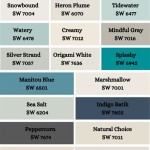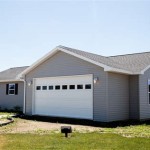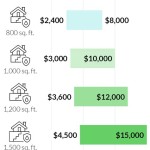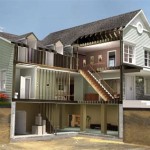What Type of Drywall for Basement: A Comprehensive Guide
Choosing the right type of drywall for your basement is crucial to ensure durability, moisture resistance, and a finished look that complements your living space. Understanding the different types of drywall available and their unique properties will help you make an informed decision.
Types of Drywall for Basement
- Regular Drywall: Not suitable for basements due to its low moisture resistance.
- Greenboard Drywall: Designed for moisture-prone areas, but may not provide sufficient resistance for high-moisture environments.
- Blueboard Drywall: A better choice for basements, offering improved moisture resistance than Greenboard.
- Purpleboard Drywall: The most moisture-resistant drywall option, ideal for areas with potential flooding or high humidity.
- Mold-Resistant Drywall: Contains antimicrobial additives to prevent mold growth in humid environments.
Important Considerations
When selecting drywall for your basement, consider the following factors:
- Moisture Resistance: Basements are prone to moisture from external sources (e.g., groundwater) and internal sources (e.g., plumbing leaks). Choose drywall with high moisture resistance to prevent damage and mold growth.
- Strength: Drywall needs to be strong enough to withstand potential impacts and resist sagging. Consider the size and layout of your basement when determining the thickness and density of the drywall.
- Fire Resistance: Drywall can contribute to fire safety by slowing the spread of flames. Choose a fire-rated drywall for added protection.
- Installation: Different types of drywall require specific installation methods. Ensure you have the appropriate tools and knowledge to properly install the drywall.
Recommended Types for Basements
For most basements, Blueboard or Purpleboard drywall is recommended due to their superior moisture resistance. These types offer protection against mold growth and damage caused by moisture penetration.
Additional Tips
- Use vapor barriers behind the drywall to further prevent moisture absorption.
- Install a dehumidifier to control humidity levels and reduce the risk of mold growth.
- Inspect your basement regularly for signs of moisture or damage, and address any issues promptly.
Conclusion
Choosing the right type of drywall for your basement is essential to create a durable, moisture-resistant, and aesthetically pleasing space. By understanding the different types of drywall available and their unique properties, you can select the best option to suit your specific needs and protect your basement from potential damage.
Beginners Guide To Installing Basement Drywall Semigloss Design

What Type Of Drywall To Use In A Basement Wallboard Trim Tool

Beginners Guide To Installing Basement Drywall Semigloss Design

Don T Test Your Luck With Drywall Why Our Waterproofed Basement Walls Are The Way To Go News And Events For Total Finishing

Basement Drywall

Gold Bond Classic 3 8 In X 4 Ft Drywall Sheet 50000944 The Home

Beginners Guide To Installing Basement Drywall Semigloss Design

Is Drywall Ceiling In A Basement Any Good Remodeling Journey

Basement Remodel Day 4 Hanging Taping Mudding Drywall

Basement Wall Products In Burlington Concord Keene Vermont And New Hampshire Covering Finishing Options For Vt Ny Nh
See Also








